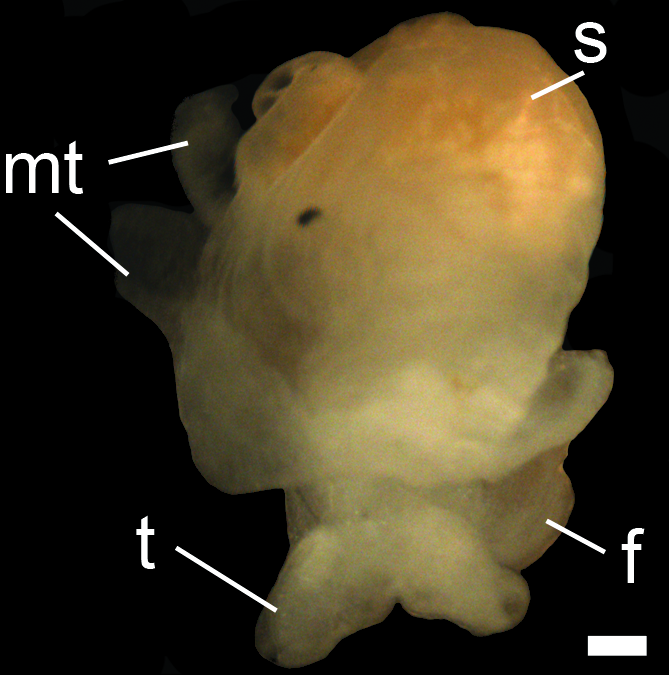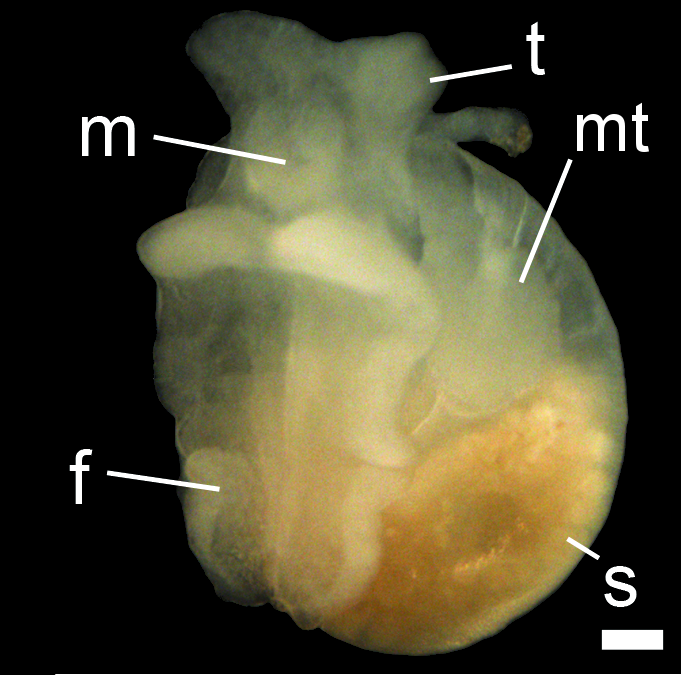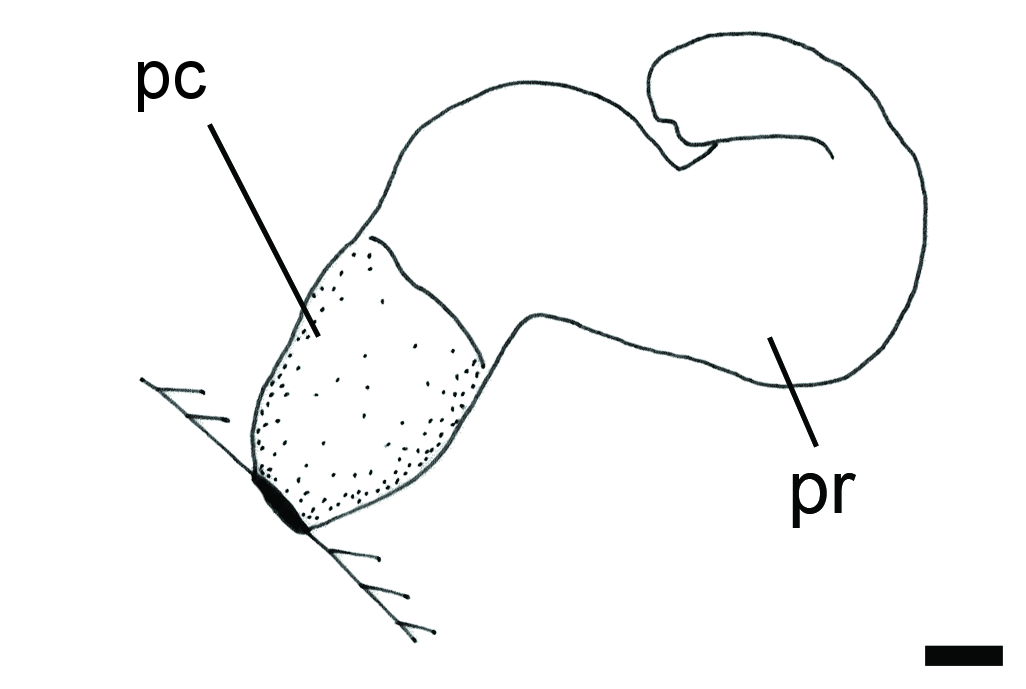Colobocephalus costellatus
Shell description
The thin shell is internal and transparent, usually with a globe-like shape. The spire of the shell is raised while the top of the shell (apex) is blunted. At the bottom an umbilicus is present and partially covered by the columellar callus. The shell pattern consists of faint wavy growth lines, and thin elevated spiral ridges. The opening is large. The shell is completely covered by tissue (mantle) in adult specimens, but may be only partially covered in smaller specimens. The length of the shell varies between 1.4–2.1 mm.
Animal description
The body is whitish-transparent in colour. The head shield is lobed towards the front; the lobes are rolled up to form short stumpy tentacles. The foot is elongate and lobed in the front and notched in the hind part, there is a median furrow present under the foot. The eyes are visible in this species. The larval kidney is visible trough the shell. The animal cannot retract completely into the shell.
Anatomy
The radula consists of two outer lateral teeth and one inner lateral tooth on each side. The central (rachidian) tooth is absent. The outer lateral teeth are curved with a broad base and smooth surface; the inner lateral teeth are curved, with a broad base and a smooth inner edge. The male reproductive system consists of a short unbranched prostate connecting to a short tubular penis chamber.
Ecology
Occurs on shell sand, sand and pebbles at depths between 55–336 m.
Geographical distribution
Occurs in Norway in Aurlandsfjorden, Kopervik (59°15’ N), Oslofjorden and Korsfjorden south of Bergen.
References
Ohnheiser LT og Malaquias MAE (2014). The family Diaphanidae (Gastropoda: Heterobranchia: cephalaspidea) in Europe, with A redescription of the enigmatic species colobocephalus costellatus M. Sars, 1870. Zootaxa 6(3774): 501-522. http://zoobank.org/References/1C4C791C-09D7-4711-9D05-1ABE3DB24916 DOI: 10.11646/zootaxa.3774.6.1.





